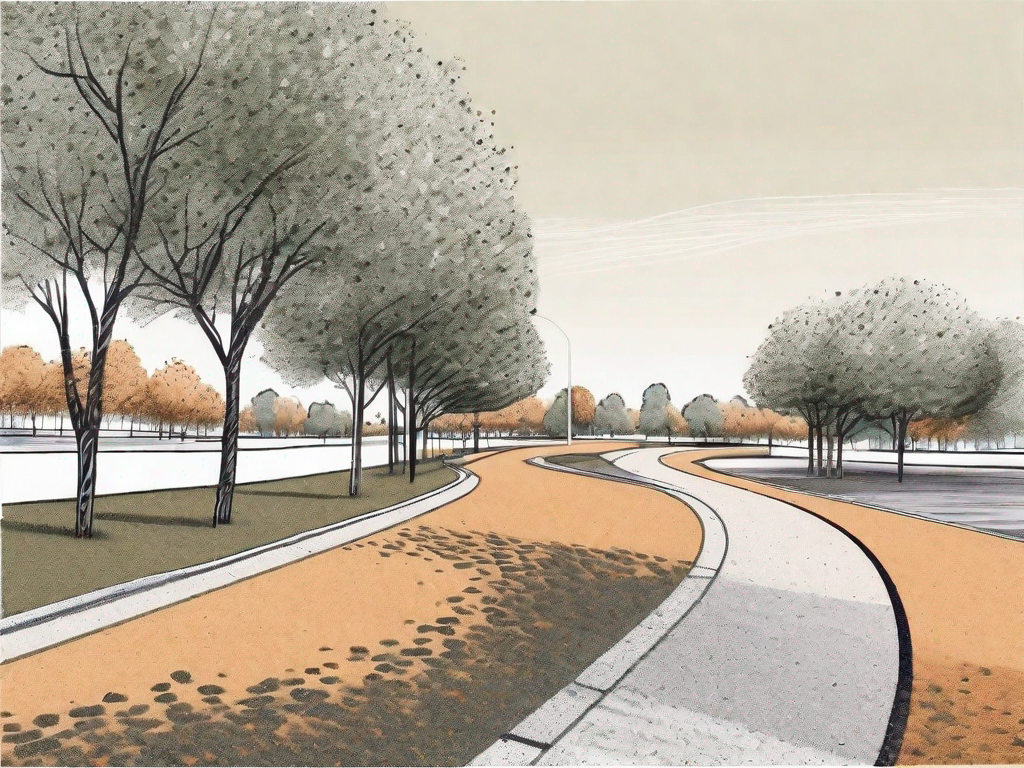Using Crushed Stone as a Gravel Alternative for Bike Path Projects
Published on: February 27, 2024
Get an estimate for your project in 60 seconds

When it comes to constructing bike paths, the choice of material is crucial. The material must be durable, cost-effective, and comfortable for cyclists. While gravel has traditionally been a popular choice, crushed stone is emerging as a viable alternative. But can crushed stone really be used as a gravel alternative for a bike path project? Let’s find out.
Understanding Crushed Stone and Gravel
Before we delve into the feasibility of using crushed stone as a gravel alternative, it’s essential to understand what these materials are. Crushed stone is produced by breaking down rocks into small, angular pieces. On the other hand, gravel is made of small, rounded stones, typically eroded by water over time.
Both crushed stone and gravel have their own unique properties, which can make them suitable for different applications. The key is to understand these properties and how they can impact the performance of a bike path.
Crushed Stone: Pros and Cons
Crushed stone offers several benefits when used in bike path construction. Firstly, it provides excellent drainage, reducing the risk of puddles forming on the path. Secondly, the angular shape of crushed stone makes it less likely to shift under weight, providing a stable surface for cyclists.
However, crushed stone is not without its drawbacks. The sharp edges can make it uncomfortable for cyclists if the path is not properly compacted. Additionally, crushed stone paths may require more maintenance than gravel paths to keep them in good condition.
Gravel: Pros and Cons
Gravel is a time-tested material for bike path construction. It’s affordable, easy to install, and provides a comfortable surface for cyclists. Furthermore, gravel paths blend seamlessly into natural landscapes, making them a popular choice for parks and rural areas.
Despite its benefits, gravel also has its downsides. It can shift under weight, creating an uneven surface over time. Additionally, gravel paths can be difficult to navigate for cyclists with narrow tires.
Choosing Between Crushed Stone and Gravel
Now that we understand the pros and cons of both materials, the question remains: Can crushed stone be used as a gravel alternative for a bike path project? The answer is yes, but the choice between the two depends on several factors.
These factors include the project’s budget, the desired aesthetic, the local climate, and the type of bikes that will be used on the path. For instance, if the path will primarily be used by mountain bikers, crushed stone may be a suitable choice. However, if the path is intended for casual cyclists or families, gravel may be more appropriate.
Considerations for Using Crushed Stone
When considering using crushed stone for a bike path project, it’s important to choose the right size and type of stone. The stone should be small enough to compact well but large enough to provide a stable surface. Additionally, the stone should be angular rather than rounded to prevent shifting.
It’s also crucial to prepare the path properly before laying the crushed stone. This includes grading the path for drainage and compacting the soil to provide a stable base. Without proper preparation, the crushed stone may shift or sink over time, leading to an uneven surface.
Considerations for Using Gravel
If you opt for gravel, choosing the right size and type is equally important. Small, rounded gravel is typically the best choice for bike paths as it compacts well and provides a comfortable surface for cyclists. However, larger gravel may be suitable for paths intended for mountain bikes or off-road bikes.
Like with crushed stone, proper preparation is key when using gravel. The path should be graded for drainage and the soil compacted before the gravel is laid. Additionally, a weed barrier may be necessary to prevent vegetation from growing through the gravel.
Where to Source Crushed Stone and Gravel
Once you’ve decided on the right material for your bike path project, the next step is sourcing it. One reliable supplier is Hello Gravel. They offer a wide range of crushed stone and gravel products, ensuring you can find the perfect material for your project.
Whether you’re looking for a specific type of crushed stone or a particular size of gravel, Hello Gravel has you covered. They even offer a convenient quote form on their website, making it easy to get a cost estimate for your project.
Conclusion
In conclusion, crushed stone can indeed be used as a gravel alternative for bike path projects. While it has its pros and cons, it can provide a durable, stable surface that’s suitable for a range of cycling activities. However, the choice between crushed stone and gravel ultimately depends on the specific needs and constraints of your project.
Regardless of the material you choose, proper preparation and sourcing from a reliable supplier like Hello Gravel are key to the success of your bike path project. With careful planning and execution, you can create a bike path that’s not only functional but also aesthetically pleasing.
Start Your Bike Path Project with Hello Gravel
Ready to pave the way for a smooth ride? Look no further than Hello Gravel for all your bike path material needs. Our premium crushed stone and gravel are just a click away, ensuring your project has the high-quality foundation it deserves. Experience our white glove service and let us handle the heavy lifting, from quote to delivery. Check out our products today and take the first step towards a seamless, customer-centric aggregate purchasing experience.
Author: alan